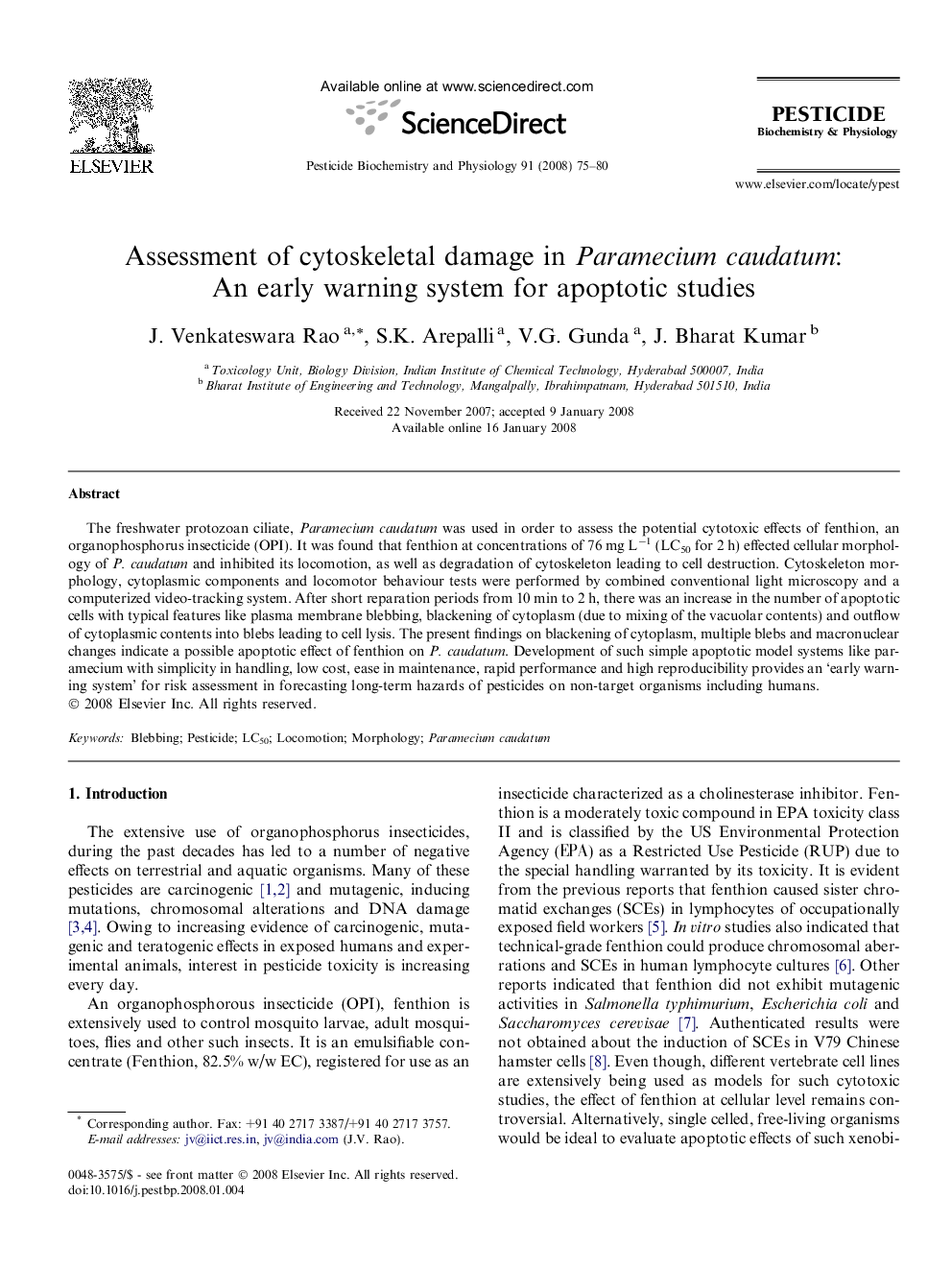| Article ID | Journal | Published Year | Pages | File Type |
|---|---|---|---|---|
| 2009659 | Pesticide Biochemistry and Physiology | 2008 | 6 Pages |
Abstract
The freshwater protozoan ciliate, Paramecium caudatum was used in order to assess the potential cytotoxic effects of fenthion, an organophosphorus insecticide (OPI). It was found that fenthion at concentrations of 76 mg Lâ1 (LC50 for 2 h) effected cellular morphology of P. caudatum and inhibited its locomotion, as well as degradation of cytoskeleton leading to cell destruction. Cytoskeleton morphology, cytoplasmic components and locomotor behaviour tests were performed by combined conventional light microscopy and a computerized video-tracking system. After short reparation periods from 10 min to 2 h, there was an increase in the number of apoptotic cells with typical features like plasma membrane blebbing, blackening of cytoplasm (due to mixing of the vacuolar contents) and outflow of cytoplasmic contents into blebs leading to cell lysis. The present findings on blackening of cytoplasm, multiple blebs and macronuclear changes indicate a possible apoptotic effect of fenthion on P. caudatum. Development of such simple apoptotic model systems like paramecium with simplicity in handling, low cost, ease in maintenance, rapid performance and high reproducibility provides an 'early warning system' for risk assessment in forecasting long-term hazards of pesticides on non-target organisms including humans.
Related Topics
Life Sciences
Agricultural and Biological Sciences
Agronomy and Crop Science
Authors
J. Venkateswara Rao, S.K. Arepalli, V.G. Gunda, J. Bharat Kumar,
